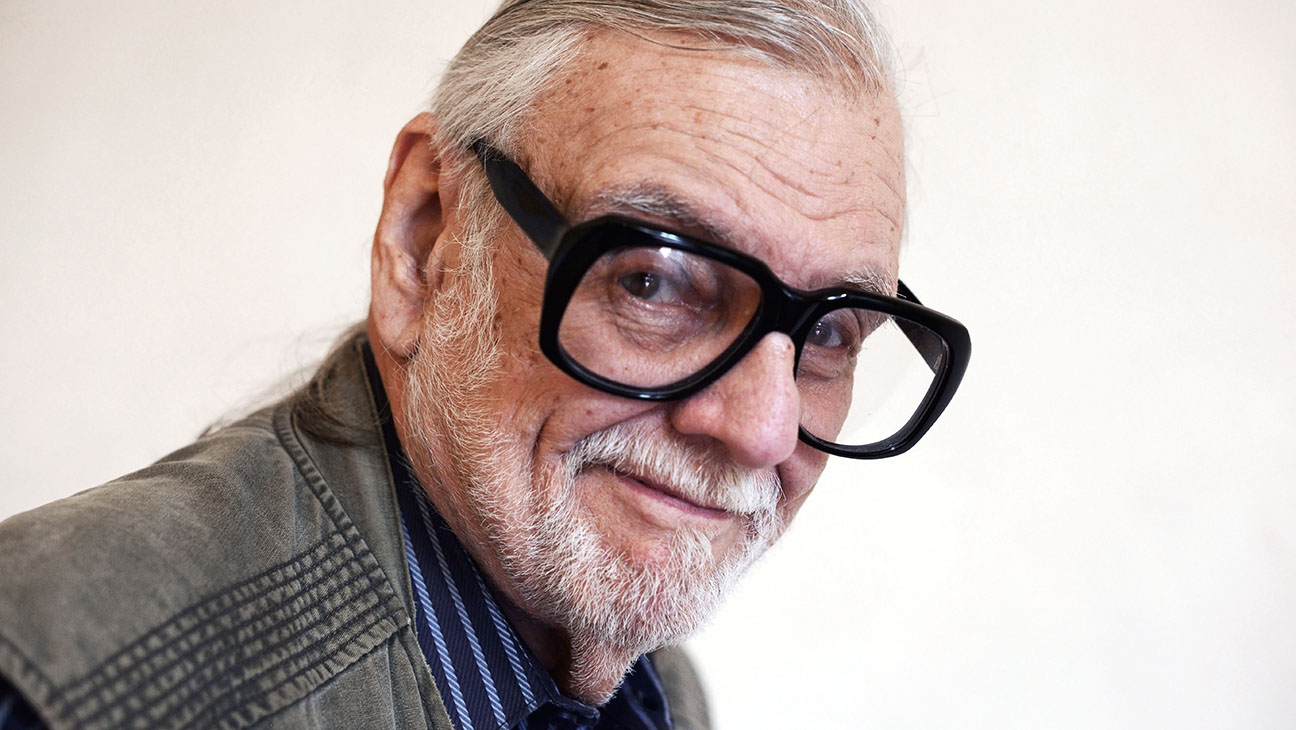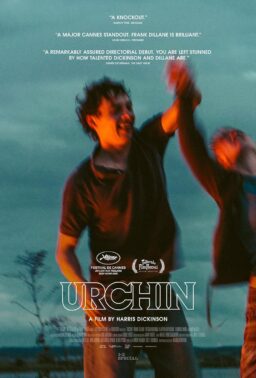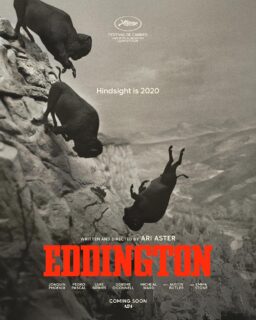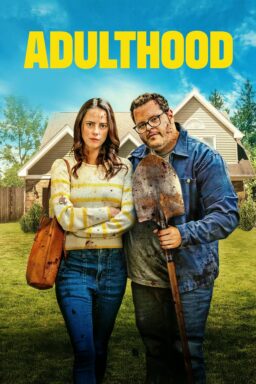Most filmmakers only dream of one day creating a work of art that will stand the test of time, and few of them manage to pull this off. Of that number, even fewer are able to accomplish it with their very first film, an independently-financed work produced about as far away from the auspices of Hollywood as one could get and still remain in the continental United States. George Romero managed to pull off that trick with “Night of the Living Dead,” a low-budget horror film that helped to revolutionize and influence the genre in ways that are still being felt today. Better yet, he proved to be more than a one-hit wonder as the near half-century spanning the release of that debut work and his passing today at the age of 77 from lung cancer saw him release a number of ingenious, provocative and wickedly entertaining works that showed him to be one of the best and most underrated filmmaking talents of his era.
He was born in the Bronx on February 4, 1940 and developed an interest in cinema from an early age—in that pre-video age, he would take the subway into Manhattan in order to rent film reels to watch at his house with the works of Michael Powell and Emric Pressburger, specifically “The Red Shoes” and “Tales of Hoffman,” being among his favorites. After attending Carnegie Mellon University in Pittsburgh, he formed the production house The Latent Image with friends John Russo and Russell Streiner and began shooting commercials and short films for outlets like the beloved children’s TV show “Mister Rogers’ Neighborhood.” Eventually the three grew bored with this sort of work and decided to make a full-length feature film. They formed a new production company, Image 10, with a local industrial film company and eventually raised around $114,000 between themselves and local investors. Deciding that horror was the way to go for aspiring filmmakers, Romero and Russo, after a couple of false starts, eventually came up with the premise of the recently deceased rising from the dead with a taste for living human flesh that Romero admitted was influenced in part by Richard Matheson’s short story “I Am Legend.” Utilizing a cast made up of local actors and friends, a couple of out-of-the-way locations and plenty of Bosco and butcher’s offal to simulate the gore, Romero and company shot the project between June and December of 1967. The film, eventually titled “Night of the Living Dead,” premiered in Pittsburgh the following October.

Those viewers, as countless audiences would be over the years, were almost certainly poleaxed by what they were witnessing. At that time, when one thought of horror films, they tended to gravitate to either silly monster movies or Gothic-style spookfests featuring the likes of Vincent Price hamming things up. “Night of the Living Dead,” on the other hand, was something different entirely. For starters, it didn’t look like a horror film per se—with its ordinary locations, less-then-glamorous actors and flourish-free cinematography, it looked more like a documentary than anything else. Then, after introducing us to the two characters—brother and sister Johnny (Steiner) and Barbara (Judith O’Dea)—as they go to a remote cemetery to visit their father’s grave, they are attacked by the first of the ghouls (the film itself never uses the word “zombie”) that kills Johnny and leaves Barbara a catatonic wreck who barely escapes to a nearby farmhouse. In an even bigger jolt, an African-American character named Ben (Duane Jones) turns up at the house as well and does something virtually unheard of at the time—assume the male lead in a film with a cast largely comprised of white actors. They are soon joined by young couple Tom (Keith Wayne) and Judy (Judith Ridley) and a family comprised of a hothead (Karl Hardman), his frightened wife (Marilyn Eastman) and a young daughter (Kyra Schon) who is unconscious after being attacked by one of the creatures as they struggle to barricade themselves from the hordes gathering outside while bickering about what to do. These characters may have seemed like standard archetypes but what happened to them was anything but standard—the young lovers die during an escape attempt and their flaming bodies are eaten, the little girl turns completely and murders her parents, and Barbara is taken by a group of zombies that includes her brother. The only survivor is Ben (a flip of the usual cliche of the black guy in a horror film always getting killed first) and after he makes it through the night—ironically by following the idea proposed by Harry that he had previously dismissed—he wakes up and, in the ultimate subversion of genre expectations, is shot to death by a posse member who mistook him (perhaps not entirely by accident) for a zombie and has his body thrown on a fire.
In other words, this was not your ordinary horror movie. Moviegoers back then found this out the hard way when they went expecting the usual campy nonsense and got one of the grimmest and most uncompromising films the genre had ever seen. At first, this proved to be a problem when theaters unthinkingly programmed it as a Saturday afternoon matinee for kids and soon had hordes of genuinely traumatized children and irate parents on their hands—Roger Ebert wrote about this phenomenon in a widely read piece that was republished in Reader’s Digest. As time went on, however, the film began to develop a reputation among film buffs as being something truly special. Sure, straightforward horror buffs were impressed by the gruesome imagery and the equally ghoulish black humor on display. But there was stuff here that even those who ordinarily wouldn’t be caught dead at such a film could appreciate. Here was a horror film that took the concerns that were taking hold of the country—specifically the racial tensions of the time, the generation gap and the conflict in Vietnam that broadcast hideous carnage into homes on the news every night—and translated them into cinematic terms in a smart and non-condescending manner that put more overtly noble social dramas like “Guess Who’s Coming to Dinner” to shame. Critics began taking notice as well and the film went on to be a genuine hit, pulling in more than $30 million worldwide on that $114,000 investment, though Romero would see virtually none of that thanks to the vagaries of independent distribution and a paperwork snafu that left one of the most popular films of its time without copyright protection.
Not wanting to be pegged strictly as a horror filmmakers, Romero’s second feature was “There’s Always Vanilla” (1971), an anti-establishment romantic comedy about the relationship between a former soldier-turned-drifter-turned ad executive and a model. The project was a box-office failure that he would declare to be his weakest effort—though it has its charms, the only reason it is remembered at all is because of Romero’s participation. His next film, alternately known as “Jack’s Wife” and “Season of the Witch” (1972), was not a box-office hit either but was a far more interesting work that told the story of a suburban woman who finds herself breaking out of societal shackles when she begins dabbling in witchcraft—although it sounds like a horror movie in theory, it was actually a surprisingly savvy meditation on the then-emerging and often-misrepresented feminist movement. “The Crazies” (1973) was a horror-action-thriller about the accidental release of a biological weapon that drives the population of a small town into madness while bumbling government officials desperately try to close the Pandora’s Box that they themselves opened—although this one also did not do well at the box-office, the combination of dark humor and an increasingly jaundiced look at just how quickly the very things that we rely on in our daily lives—family, friends, government—can fall by the wayside in a time of panic eventually made it into a cult favorite as well.

His next film, “Martin” (1978), would prove to be his second masterpiece and Romero would often declare it to be his favorite of his works. In it, he managed to breathe new life into one of the most familiar of horror tropes, the vampire story, with a tale of a young man named Martin (John Amplas) who claims to be both 84 years old and a genuine vampire. He only looks to be about 18 but he does have visions that, if real, suggest a vampiric past and he definitely drinks blood that he acquires by drugging his victims and slitting their wrists with a razor. His cousin, on the other hand, does believe him to be a vampire and when Martin has to go live with him, he vows to destroy him if he engages in any vampiric activity. For a while, Martin tries to live normally and even falls in love with a local housewife. But his cravings soon become too hard to conquer and things soon go very bad. From its hypnotic opening sequence in which Martin stalks and attacks a young woman on a train to its audacious finale, Romero brilliantly explores the gulf between delusion and reality in the mind of an obviously disturbed young man that is both terrifying and oddly touching. Although also not a hit, it too became a cult classic and Romero was sufficiently invigorated by the experience to do what he had been avoiding for a while—a return to the zombie genre that he helped create.
Like its predecessor, “Dawn of the Dead” (1978) presumably needs no introduction to anyone reading this. Utilizing the crass materialism on display in the late Seventies as the subtext and the Monroeville Mall in suburban Pennsylvania as a backdrop, Romero expanded on the comparatively humble original with a epic horror satire in which a quartet of uninfected people escaping from the ever-growing numbers of the walking dead hole up in a shopping mall and find themselves living out their consumerist fantasies while battling both the zombies (“This was a very important place in their lives”) and a group of bikers who want the store goodies for themselves. Shooting this time in full color, Romero opened the film with some still-startling gore (including the infamous moment in which a zombie gets scalped by a helicopter blade) before settling into his bleakly amusing look at people reduced to fighting over crappy TVs (despite television being reduced to a series of increasingly confused warnings about the plague) instead of joining to fight the common enemy. Although it was released without any rating so that Romero would not have to cut the gore for an “R” rating, the film went on to be the biggest hit of his career with many suggesting that it was the rare sequel that topped the original.
Once again, Romero shifted away from zombies for his next couple of efforts. “Knightriders” (1981) was a decidedly unusual and oddly effective drama about the goings-on amongst the members of a traveling renaissance fair (led by Ed Harris in his first lead role) whose members joust on motorcycles and whose union is threatened as they find themselves failing to live up to their own personal ideals. For his next film, “Creepshow” (1982), he teamed up with the leading light of literary horror at the time, Stephen King, for a five-part anthology film whose stories were patterned on those found in the gory E.C. horror comics that caused much pearl-clutching back in the 1950s. Unlike most of Romero’s films, there is hardly a speck of social commentary on display in this one but it is an undeniably entertaining work of gory goofball fun nevertheless, even if the only truly scary thing about it is King’s jaw-dropping performance as an unlucky hick who stumbles upon a deadly meteorite and pays the price. Around this time, he also helped develop the horror anthology series “Tales from the Darkside” that ran in syndication from 1983-1986 and eventually spawned a 1990 feature film that he would write.

Romero then attempted to secure the funding for a third zombie movie but when his original conception for “Day of the Dead” proved to be too pricey for a film that would have to be unrated, he came up with a vastly scaled-down version that was set almost entirely within an underground facility where a small group of military personnel and scientists have holed up while the outside world is overrun with zombies. The scientists are experimenting with the undead and one even seems to have developed a form of communication with one but before it can be expanded on, tensions between the two human groups explode with grisly results for all. Using his rage at the military might-makes-right attitude of the Reagan years as his springboard, this is easily the angriest of the “Dead” films with little of the humor found in Romero’s other work. Needless to say, the end result was not very popular with audiences or many critics at the time but as the years have passed, the film has undergone a much-deserved critical reappraisal and many now rank it as the equal of its predecessors.
Unfortunately, this led to nearly 20 years in which Romero found himself working on projects that, for one reason or other, never made it before the cameras—at various points, he was announced as the director for adaptations of numerous Stephen King properties (including “The Stand,” “Pet Sematary” and “The Girl Who Loved Tom Gordon”), a remake of “The Mummy” and an adaptation of the “Resident Evil” video game that his films helped to inspire. On the infrequent occasions when he did get something in front of the cameras, they failed to connect with audiences. “Monkey Shines” (1988) was an interesting effort about a paralyzed man whose life is turned around with the aid of a helper monkey named Ella—what he doesn’t know is that, as the result of a secret experiment, she not only personally responds to the rage and helplessness felt by her master but goes out to enact the dark desires that he cannot do himself. The film is good but with a premise that couldn’t help but sound goofy at first glance, it never found the audience it deserved. He next teamed up with friend and occasional colleague Dario Argento for “Two Evil Eyes” (1990), in which each adapted a story by Edgar Allan Poe—he did “The Facts About Mr. Valdeman,” Argento did “The Black Cat,” neither was among their more distinguished works and the end result was barely released in theaters anyway. “The Dark Half” (1993) found him adapting the Stephen King novel about a serious author (Timothy Hutton) who decides to kill off the pen name under which he has written a series of trashy-but-popular violent potboilers, only to discover that the alter ego appears to be real and none too happy about being cast aside. The film is okay but one of Romero’s more anonymous efforts, one which was barely seen as its distributor, Orion, was going down the tubes as it was coming out. Distributor problems also dogged “Bruiser” (2000), a blackly funny work about a metaphorically faceless man (Jason Flemying) who wakes up one morning to find his visage replaced with a blank white mask and uses his anonymity to get revenge on those who have wronged him. While it was his best work in years, this one never even got a theatrical release and instead debuted on home video.
Although Hollywood had no interest in making his films during this time, they did have an interest in remaking them—he scripted a not-bad 1990 remake of “Night of the Living Dead” that he did basically as a way of paying back the investors of the original film and 2004 saw the release of a big-budget studio remake of “Dawn of the Dead” that was a serviceable bit of gory entertainment, albeit one that lacked the social commentary that made the original so great. However, it proved to be a hit and as a result, Romero not only was given the opportunity to make a fourth “Dead” film but he was able to do it with studio financing and a cast including such familiar faces as Simon Baker, John Leguizamo, Asia Argento and Dennis Hopper. At first, purists accused Romero of finally selling out to the corporate filmmaking machine but “Land of the Dead” proved to be both worth the wait and a worthy entry into the franchise. Updating his original concept for “Day of the Dead,” this film finds the zombies having taken over virtually the entire world while a battle breaks out at a walled city between the haves that run the place and get the best of everything (or everything that is left) and the have-nots who do all the work but reap few of the benefits. Simultaneously merging together commentary on the country’s post-9/11 mindset (with Hopper doing a hilarious riff on Donald Rumsfeld) and humanity’s tendency to ignore problems rather than deal with them (here utilizing a wall metaphor that has only grown more potent with age), this proved to be one of the more politically daring and aware studio films of its time as well as being a superior horror exercise as well that may have lacked the excessive gore of earlier films but which still found Romero coming up with any number of ingeniously grisly moments to keep the fans happy.

For what would prove to be his last two feature films, Romero would stick with further explorations of the zombie mythos, which had by now become a hugely popular narrative trope, with varying degrees of success. After the massive scope of his previous film, he went back to basics with “Diary of the Dead” (2007), a project which rebooted the entire saga and observed the beginning of the zombie onslaught through the eyes of a group of student filmmakers who go off into the woods to make a cheapo horror film as the outbreak commences and then have to fight their way back to a civilization that is already collapsing before their eyes. Recasting his mythos for the YouTube generation—going so far to do it as a found footage exercise—may have raised some eyebrows but rather than being just a cynical exercise, this could be seen as Romero’s most nakedly autobiographical film in the way that it starts with a bunch of people just setting out to make a horror film and ending with the sight of an ambitious filmmaker locked away in a room with nothing else to do but piece together a zombie movie. A follow-up was quickly announced and while early reports suggested that it would be a direct continuation of “Diary,” “Survival of the Dead” (2009) was pretty much a stand-alone effort with few connections to its predecessor. Too bad, because the resulting work, in which two families on an island off the coast of Delaware bicker over their attitudes towards zombies—one hopes for a cure for their undead loved ones while the other wants to exterminate them all—in a conflict that soon devolves into a modern-day Hatfields and the McCoys, albeit with slightly more gut-munching. Although there were a couple of nifty moments of gore to be had, this was a largely empty exercise that was as inconsequential as many of the other zombie-related films that Romero had inspired over the decades.
Although his filmmaking career may have ended on a downbeat note from an artistic standpoint, that in no way invalidates the rest of his career. Romero truly revolutionized the horror film and showed that a film of that genre could actually offer up genuine food for thought for viewers while making them lose their lunch at the same time. Although zombies have largely worn out their welcome as of late, it is still amusing to note that an entire cottage industry continues to this date because of what Romero and his friends did all those years ago. Finally, as someone who had the opportunity to meet and speak with Romero numerous times over the years—even conducting a Q&A with him following a screening of his original classic—I can assure that as wonderful and inspiring as he was as a filmmaker, he was all that and much more as a person.












